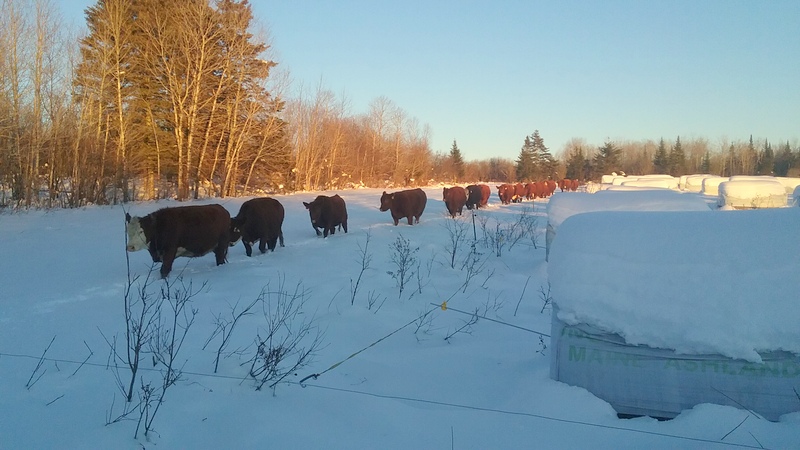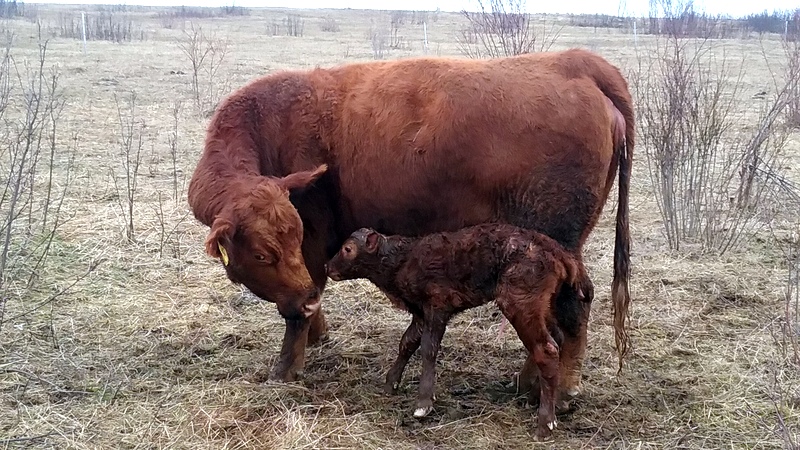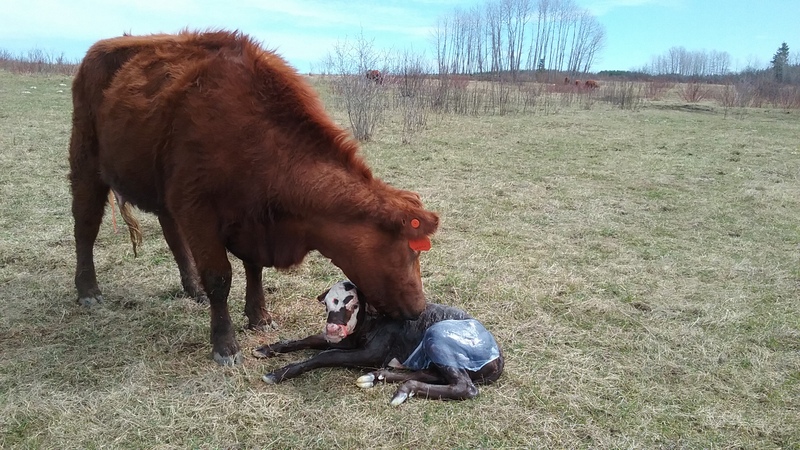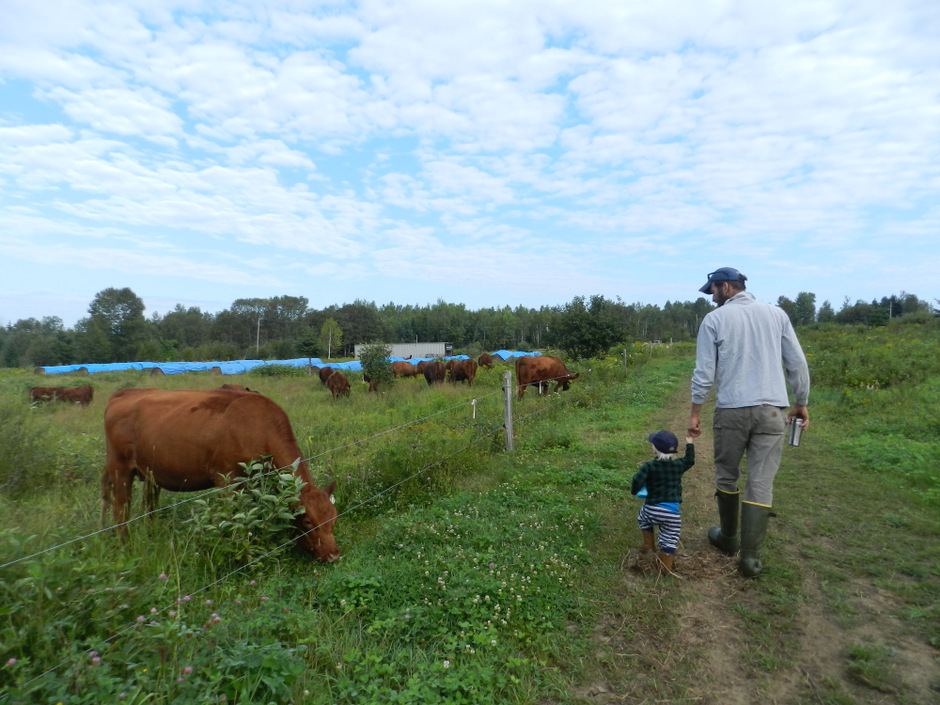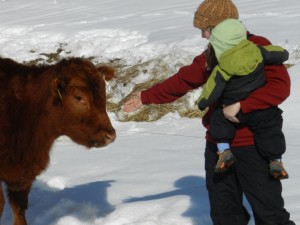It sure has been a busy year here on the Wood farm. Our cattle herd continues to grow, and we are riding out the ups and downs of the cattle market. We realize how fortunate we are to be able to stay afloat, even with discouraging cattle prices.
Ingenuity, hard-work and our passion for these animals and this business continues to drive us forward. I was recently at the store and a sign caught my eye. It was a small wooden sign with the saying “Always look for the silver lining.” That saying hit home and reminded me that even when we have our days of dark clouds, there is always – ALWAYS – a silver lining to be found. If we didn’t believe that, we wouldn’t make it in this business.
BELOW IS AN UPDATE FROM THIS LAST YEAR:
Winter 2016/2017 – Faced with low prices for feeder calves, we decided to carry our calves over through the winter. This was our first year having calves throughout the winter. This meant managing two separate groups of cattle – calves and cows. For us, it is best to keep our cows separate from our calves – mainly due to the dynamics of our hay bale feeding system.
Every winter brings a new set of challenges (I like to call them”learning experiences”) but, all in all, our calves did really well with respecting the wires and navigating our hay bale system.
It was pretty neat to watch these babies figure it out all on their own. They have turned into some fine yearlings for us.
Our cows are old pros at winter hay bale grazing and the yearling heifers picked it up quite quickly.
Spring 2017
Spring is always a welcome sight on the farm. Seeing that grass – even if it is brown – is a sight for sore eyes and of course, the baby calves. Those frisky, adorable babies make a long winter all worth it!
Our first calf was pushed into the world on April 23rd and they kept coming for the next month. In total, we ended up with 16 healthy calves.
We lost one calf from what we suspect was some sort of weakness syndrome or developmental issues. She never did stand and despite two days of bottle feeding colostrum, she just didn’t make it. When she was born, there was something odd about her eyes…like she wasn’t all there. It was a rough few days for all of us and as a mama myself – it hurts my heart to see a mama cow crying over her dead calf.
Story time…..When I was pregnant with my 2nd son a few years ago, I had a stillborn calf. Hubby was gone in the woods for a few days for work and out of cell service and I was home alone with my 2 year old son and my very pregnant self. It was easily the lowest point I have had thus farm in cattle farming. But, as our mentor told me – as I called him sobbing and asking what to do – sometimes there is nothing you can do and this is just the way of life on a cattle farm.
Happily, though, this year I was blessed to be able to witness a few of the births. Amazing – simply amazing – what these cows can do and the instincts they have. Of course, there always seems to be a story with each calving season about “that” cow. This year, it was a first – calf heifer and a small one at that. I was doing a herd check and caught her water breaking. 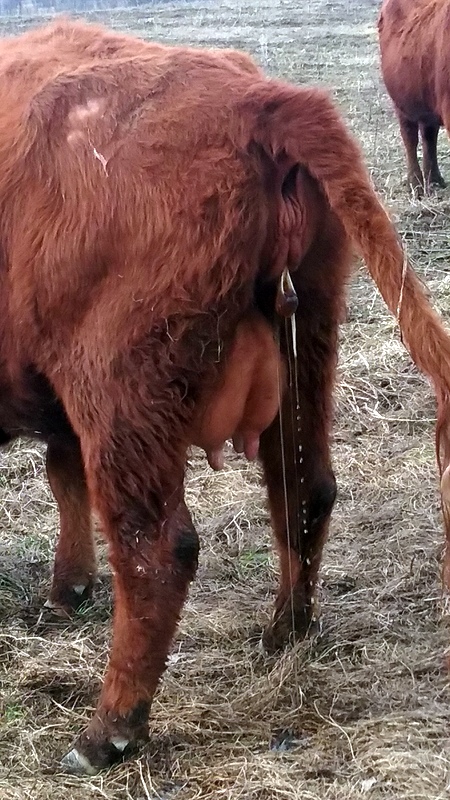
Since first-calf heifers take a little longer to labor, I wasn’t too concerned when 30 minutes had gone by and there was no progress, despite multiple attempts to push. Then, I saw two little hooves sticking out and the pushing continued for another 15-20 minutes but with zero progress. Ultimately, those two hooves disappeared and the heifer stood up and basically said “I am done. No more pushing. ” Thankfully, the hubby was home, so I called him up and we agreed that we needed to get the heifer in the chute and pull the calf. 
Now, my husband and I have pulled a few calves before but this was by far the hardest pull experience we have ever had. At one point, we didn’t know if we would be able to get that calf out. This heifer was barely pushing and she never did push the hooves back out on her own. The hubby had to reach inside and pull them out enough to slip the chains on. The chains kept slipping off and as I said before, this heifer was SMALL. We eventually progressed enough to get the head and front legs out. At this point, we had half a calf dangling out – a live calf, staring at us. Usually, after you clear the shoulders, the rest of the body slips out pretty easy. Not in this case. This heifer was so small and this calf was so large, we struggled and struggled with zero progress and this heifer was giving us NO help. I tell you what…it is one thing to try to pull a calf when they are still inside their mama…it is an entirely different experience when you get half the calf out and you are literally stuck and mama cow has given up. By some miracle, that mama cow gave us one big push and we pulled with all our might and she pushed again and we pulled the rest of that calf out. I can still remember the thrill when we realized we had actually pulled the calf out and it was alive and unharmed! It was a good feeling for sure.
Please check back for Part 2, where I talk about vaccinations, pregnancy checks and our game plan for 2018.
We hope everyone has had a successful and productive year thus far!



